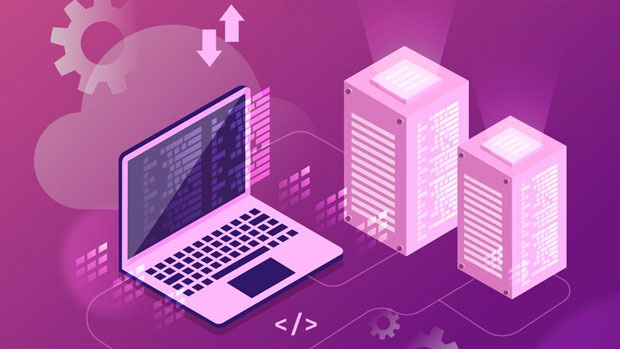In the world of artificial intelligence (AI) and machine learning (ML), the quality and volume of training data play a crucial role in determining the effectiveness of models. Collecting diverse and comprehensive datasets is one of the most significant challenges faced by AI researchers and practitioners. PYPROXY, a Python-based tool for web scraping and data collection, has become a popular choice for acquiring large amounts of data from websites. However, when it comes to large-scale AI training data collection, there are critical aspects to consider. In this article, we will explore whether PyProxy is truly suited for large-scale AI training data collection, analyzing its advantages, limitations, and potential impact on the process. Understanding the Role of Data in AI Model TrainingThe effectiveness of an AI model heavily depends on the quality and diversity of the data used in its training. A dataset with rich, varied, and accurate information enables models to learn and generalize better. For tasks like natural language processing (NLP), computer vision, or speech recognition, having vast amounts of high-quality data is essential. AI models rely on patterns, correlations, and context from this data to make predictions and decisions.For instance, a language model trained on a small or biased dataset may struggle to generalize to real-world applications, resulting in poor performance. Hence, the importance of large-scale data collection cannot be overstated. Traditionally, data collection involves manual efforts, scraping websites, purchasing datasets, or using APIs to gather publicly available data. In this context, tools like PyProxy can be employed to automate and streamline the data gathering process.How PyProxy Works: A Brief OverviewPyProxy is a Python library that allows developers to route web scraping requests through proxy servers. This feature makes it possible to bypass limitations such as rate limiting, IP blocking, and geolocation restrictions, which are often encountered when scraping large volumes of data from the web. By using proxies, PyProxy can make multiple requests without being detected as a single entity, thus enabling access to data from various sources.PyProxy's primary use case is in web scraping, where it automates the process of collecting data from websites. It offers several features that are beneficial for large-scale data collection, such as handling requests concurrently, rotating proxy ips, and managing errors. While these capabilities may seem ideal for AI data collection, there are factors that need to be addressed to determine its suitability for AI model training.Advantages of Using PyProxy for Large-Scale Data Collection1. Scalability: One of the key benefits of PyProxy is its scalability. For AI models, vast amounts of data are required to build robust algorithms. PyProxy’s ability to manage large numbers of requests simultaneously makes it a good candidate for scalable data collection. It can easily scale to accommodate the data needs of large AI projects.2. Bypassing Restrictions: Many websites implement mechanisms to block automated scraping tools. PyProxy's proxy rotation and ability to mask IP addresses allow it to bypass these restrictions, making it easier to gather data from websites that may otherwise be inaccessible due to rate limits or geographical restrictions.3. Data Diversity: With its ability to scrape a wide variety of websites, PyProxy can help collect diverse data, which is crucial for training AI models. Data diversity is key to ensuring that AI models are not biased or overly specialized. The more varied the training data, the better the model’s generalization capabilities.4. Speed and Efficiency: When collecting large datasets, time is a critical factor. PyProxy supports concurrent requests, enabling fast data scraping, which is essential for large-scale projects. The ability to run multiple instances of data collection simultaneously reduces the overall time needed to collect vast datasets.Challenges and Limitations of PyProxy for AI Training Data CollectionWhile PyProxy offers several advantages, it also presents some challenges that must be carefully considered when using it for AI training data collection.1. Legal and Ethical Concerns: Web scraping, particularly on a large scale, raises several legal and ethical issues. Many websites have terms of service that prohibit scraping, and violating these terms can lead to legal repercussions. Furthermore, scraping personal data without consent may infringe on privacy rights and violate regulations such as GDPR. These concerns must be addressed to ensure compliance with laws and ethical standards.2. Data Quality: One of the most significant issues with using PyProxy for large-scale data collection is the potential inconsistency in the data quality. Not all websites provide clean, structured data, and scraping unorganized or inaccurate data can lead to unreliable datasets for AI training. This may result in poor model performance, as the data used for training could be incomplete or noisy.3. Proxy Management: Managing proxies can be cumbersome, especially when dealing with large-scale data collection. While PyProxy allows for proxy rotation, issues such as proxy failures or slow speeds may arise. Maintaining a reliable set of proxies for efficient scraping can require additional infrastructure, monitoring, and maintenance, which increases operational complexity.4. Resource Intensive: Large-scale data scraping requires significant computational and network resources. PyProxy's concurrent requests can put a strain on servers, and managing hundreds or thousands of scraping tasks can demand high processing power. Additionally, handling vast amounts of data requires efficient storage and processing solutions, which adds to the overall cost of the operation.Alternative Approaches for AI Data CollectionWhile PyProxy is a viable tool for web scraping, there are alternative approaches for large-scale AI training data collection that may better suit specific needs:1. Public Datasets: Many organizations and research institutions offer large, curated public datasets that are ideal for training AI models. These datasets are typically pre-cleaned, structured, and designed for machine learning purposes, making them a reliable and ethical alternative to web scraping.2. Data Licensing: Purchasing or licensing datasets from reputable data providers ensures high-quality, well-organized data that complies with legal and ethical standards. Licensed data often comes with the added benefit of being pre-processed and ready for model training.3. Collaborations and Partnerships: Collaborating with other organizations or researchers who have access to relevant datasets can provide high-quality data without the need for scraping. Partnerships also allow for shared resources and knowledge, facilitating the collection of comprehensive datasets for AI training.ConclusionIn conclusion, PyProxy can be a powerful tool for large-scale AI training data collection, especially when dealing with publicly available data from the web. Its scalability, ability to bypass restrictions, and speed make it an attractive option for scraping data from various sources. However, the challenges related to legal concerns, data quality, proxy management, and resource requirements should not be overlooked. Depending on the specific needs of an AI project, PyProxy might be suitable for some use cases but may require careful planning, resources, and consideration of ethical implications. Exploring alternative data collection methods such as public datasets, licensing, or collaborations can offer additional benefits in terms of data quality, compliance, and reliability.
Apr 03, 2025
![arrow]()




























































